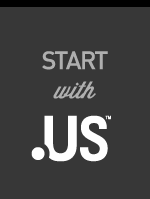
Last week Neustar was awarded a contract to continue operating the .us registry until 2029, which Neustar views as a “vote of confidence” in their “work thus far with .US, as well as the expertise and capabilities of our team and our infrastructure.” Domain Pulse spoke to Nicolai Bezsonoff, Vice President and General Manager of Registry Solutions at Neustar about what the announcement means to Neustar, the importance of security not just with .us but with all their TLDs, combatting abuse, reaching target audiences and how to combat .com in the US.
Domain Pulse: This contract will take Neustar’s operation as the .us registry past 20 years and in many ways it’s been a silent success. What are Neustar’s plans to continue .us’ growth during the next many years?
Nicolai Bezsonoff: We’re really proud of the long-standing relationship and productive partnership we have built with the NTIA, and we’re thrilled to have received this vote of confidence in our work thus far with .US, as well as the expertise and capabilities of our team and our infrastructure.
That said, we’re certainly not resting on our laurels. As we have done for many years, the next phase of .US will involve a continual cycle of innovating and investment to expand our markets, refine our messaging, implement creative marketing campaigns, engage more deeply with our community, stay abreast of the latest opportunities in marketing and digital, and form meaningful, productive partnerships with organizations that can help us spread awareness and inspire use of the .US domain.
More broadly, over the last few years Neustar Registry has been investing heavily in its DNS and DDoS mitigation capabilities as well as policies and procedures to tackle domain abuse and other cybersecurity concerns, in collaboration with experts and authorities around the world. Our emphasis on security is in turn helping us build a more resilient, robust and trustworthy Registry offering for all our TLDs, .US included, and I suspect is a big part of the reason why other ccTLDs such as .IN and .CO also trust Neustar to protect their critical infrastructure.
This innovation in how we operate and market .US, as well as continually securing and improving performance of our Registry and our TLDs, will ensure the continued value of .US domains for our Registrants – ultimately encouraging loyalty and driving new registrations.
DP: .us has had to compete for awareness against generic top-level domains, particularly .com but also .net and many of the new gTLDs – how have you made .us stand out and be noticed when .com in particular is all many Americans think of?

NB: That’s a really fair question – and to be honest, it’s something that all Registries face in some way or another. Particularly with the increased competition created by new TLDs but even outside this; when there is a choice for consumers to make, then you have to offer something the others don’t. And in truth, that is one of the biggest challenges for our industry.
Firstly, to address .com – it is the dominant industry player for many reasons – most obviously that it had a massive first mover advantage. The .com domain had already been successfully deployed in the United States for many years before the .US country code TLD ever launched.
What we’ve always aimed to do with .US, and will continue to be a key focus moving forward, is to give American consumers an alternative that ticks a few additional boxes. The same logic applies to new TLDs – one of the main goals of the new TLD program was to provide greater consumer choice, and that simply means we need to build a strategy that makes .US a strong and convincing choice for our target market. Choice is ultimately a good thing for our industry, benefiting our customers and keeping us as Registry Operators accountable while also driving creativity and innovation.
Getting a certain domain at a certain price is only one part of the picture, and while some customers will only want to look at this, for those wanting to explore their options then we’re proud to offer a namespace that is stable and authoritative. We’ve worked hard (and will continue to do so) to make sure .US is one of the safest, most secure and trusted domains in the world. This includes everything from our leading and continually-evolving DNS and DDoS capabilities, to our proactive work regarding domain name and DNS abuse. We believe this kind of development and innovation provides additional layers of service to .US domain registrants that perhaps you won’t get from other namespaces that charge a dollar a domain.
Beyond this, while it’s not a “new” TLD, .US still has drastically fewer domains registered than .com which means greater availability of meaningful names. And even though .com is fairly synonymous with U.S. websites, .US has the branding advantage of actually having “US” in the domain itself, which is a primary selling point for many of our Registrants.
The last point I’ll make, but a very important one, is that we also have a fantastic marketing team that works very hard to spread awareness, growth and use of the .US domain, and we’re continually developing new, creative campaigns to broaden our market and reach new customers.

DP: Many ccTLDs around the world are struggling for growth – maintaining registrations but finding the market somewhat saturated. How has Neustar found the market for .us?
NB: Finding a target market for a ccTLD like .US is both a blessing and a curse – technically the entire United States is our potential audience, but realistically we need to be strategic about who we’re speaking to and what message they want to hear.
Over many years we’ve developed a ‘micro-targeting’ approach, focusing on specific, targetable audience groups and crafting dedicated messaging for each, then reaching them through really pinpointed channels and platforms.
The ‘.US market’ contains everything from small business (really our bread-and-butter), to political candidates and activists, to community organizations and causes.
That said, we have to remain innovative and nimble to keep up. One approach we developed to grow new markets was to lean into using .US in reference to the word “us” rather than just an acronym for the United States. From this, we’ve found a new and engaged audience in both families registering domains for family websites or email addresses, and engaged couples finding a creative address for their wedding website.
My colleague, Lori Anne Wardi, recently wrote an article in Domain Name Wire that shares more of the specifics about .US marketing [which is available here].
Building a strong product that is differentiated from our competitors is one thing, but ensuring we’re deliberate and targeted in the way we promote .US is another key part of the equation if we want to ensure the continued success of .US.
DP: Over the last 18 years Neustar has managed .us, what have been some of the highlights?
NB: When it comes to the internet, 18 is a lot of years! I think of internet years a lot like dog years, every 1 year is really equal to more like 7 years of change and evolution. Some of my favorite highlights during this (very long) time have been:
- Being given the honor 18 years ago to work side by side with the U.S. Government to run this unique public resource and critical piece of internet infrastructure representing the United States of America;
- Hitting the 1 million – then the 2 million — domain names under management milestones – and knowing that we were able to achieve these numbers by safely and responsibly growing the namespace;
- Despite operating in a far more competitive and complex market since the launch of the new gTLD program, continuing to grow the number of .us domain names under management by tapping into new and creative markets;
- The effective launch of the .US Stakeholder Council in 2014, and today, effectively operating the .US domain as a multi-stakeholder endeavor, with the support and engagement of both internal and external stakeholders (including domain name organizations, consumer groups, industry organizations, registrars, the U.S. Government, law enforcement agencies and global internet users, etc.);
- Very recently, partnering with the U.S. Food and Drug Administration and the DOC to build proactive measures to address the sale of illegal opioids in the .US namespace, and in other TLDs too;
- Our many creative marketing campaigns we’ve run for the .US domain – I’ve loved so many of them, but last year we launched my absolute favorite, The Story of .US video campaign. You can watch it on the about.us website here: www.about.us/whos-on-us;
- And of course, I must confess that a highlight of our time managing the .US domain was getting the great news that our contract would be renewed!
DP: Looking ahead, what changes and initiatives are you planning for .us?
NB: Fundamentally, the success of .US so far has taught us some valuable lessons in what works, and what doesn’t, and we’re lucky to have an established reputation, strong industry partnerships and an engaged customer base – so we’re certainly not in favor of ‘change for the sake of change’.
That said, as I’ve mentioned, we are always open to innovation and experimentation to remain secure, fresh and relevant. Specifically for the .US domain, we have a number of upcoming campaigns for new ‘micro-target’ audiences (can’t give away too many details just yet!). As part of this we’re implementing a really broad range of marketing activities – everything from podcasts to eBooks to video to event sponsorships to make sure we’re reaching our audiences on the platforms and channels they actually use.
Ultimately, our overarching goals are to drive meaningful increases in consumer awareness of the .US Top-Level Domain, to generate new registrations, and to inspire development and usage through our end-to-end marketing campaign strategies.
We’re excited to continue driving .US brand affinity and awareness for everyone with a dream, idea or business made for the USA.
This latest Domain News has been posted from here: Source Link
